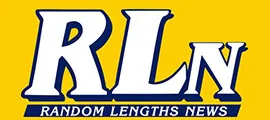The Ultimate Offshore Sailing Challenge
The Trans-Pacific Yacht Race is a sailboat race from San Pedro to Hawaii and it returns July 1. The race features single-handed sailing to teams of 12 or more on sailing vessels.
The race from the buoy at Point Fermin to the Diamond Head Lighthouse in Honolulu is a “downhill” race with the wind blowing from behind, pushing the boat forward. This allows for faster, smoother sailing and often involves using large sails like spinnakers to catch as much wind as possible.
The starting line looks like chaos with a bunch of boats circling, trying not to hit each other. It’s one of the most counter-intuitive starting lines in all of sports because you can’t line sailboats up and just say “Go.” It’s fluid. The boats have motors and minimal gas, but they can’t use them during the race or at the starting line. The motor and fuel on a Transpac boat are for emergencies and docking before and after the 2,225-mile journey by sail.
On the way back, sailing vessels have to go north to the 40th parallel, then head east because they are sailing against the wind, requiring the vessel to zigzag (tack) at an angle since a sailboat cannot sail directly into the wind. This manner of sailing is slower and more technical, demanding precise vessel handling.
This is a sport where competitors endure weather conditions that can change from one hour to the next, going from calm waters to violent squalls. Sometimes sailors steer between them on the return.
As of April 2025, the Transpacific Yacht Race (Transpac) has attracted a diverse fleet of 60 registered entries. Notable participants include:
- Extreme H2O 2.0: an M&M 72 multihull owned by Patrick Benz, marking the 50th entry for this edition.
- Westerly: a Santa Cruz 52 skippered by Dave Moore, returning after a strong performance in the 2023 race.
- Pyewacket: Roy Disney’s renowned Andrews 70, a past first-place finisher, demonstrates continued commitment to the competition.
- Merlin: the iconic Bill Lee-designed sled, celebrated for its storied history in Transpac races.
- Ragtime: the Spencer-designed yacht that made its Transpac debut in 1973, returning to add another chapter to its legacy.
- Akua Kai and Favonius 2: two TP52 class yachts aiming for top honors in this competitive fleet.
- Peligroso: a Kernan 68 now skippered by Cecil Rossi, who secured a division win in 2023 with the Farr 57 Ho’okolohe.
The entry list also features a mix of veteran racers and newcomers, with various boat classes such as Andrews, Beneteaus, Santa Cruzes and J/Boats represented.
The 2023 winners include the Bakewell-White 100 yacht RIO100, skippered by Sebastian Moshayedi, who won the prestigious Barn Door Trophy with an elapsed time of 7 days, 13 hours, 16 minutes and 38 seconds. This marked the third Barn Door Trophy win for RIO100, having previously claimed victory in 2015 and 2017.
The King Kalakaua Trophy, awarded to the overall winner on corrected time, was provisionally granted to WESTERLY 52, a Santa Cruz 52 skippered by Dave Moore.
In the multihull category, the MOD 70 trimaran Orion, skippered by Justin Shaffer, achieved line honors, finishing the 2,225-mile course from Los Angeles to Honolulu approximately six hours ahead of its closest competitor.
The Barn Door Trophy is given to the monohull yacht (a traditional single-hull sailboat with a single sail) with the fastest elapsed time without powered assistance. It is considered one of the race’s top honors, traditionally awarded to the first monohull to finish the 2,225-nautical-mile race from Los Angeles to Honolulu.
Originally, the trophy was for the overall fastest yacht, but in 2009, race organizers introduced a separate trophy for yachts using powered winches, keeping the Barn Door Trophy exclusive to manually operated boats.
The King Kalakaua Trophy is named after one of the founders of the race, which recognizes speed and strategic sailing skills.
New technology has been a game changer in sailing races over the past 30 years. Traditionally, Transpac racers have sailed by the stars ever since its inception in 1906.
Today, boats use Starlink for reliable internet access, allowing for the close monitoring of Pacific Ocean weather and helping sailors avoid slow spots while finding fast ones during the race. Before the advances in communication technology, reports could be received periodically. Now, regularly updated reports are at the navigators’ fingertips on vessels with Starlink.



